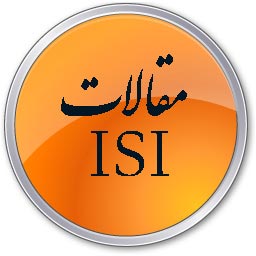بررسی رزنانس زیرسنکرون در خطوط انتقال HVDC مبتنی بر VSC
| دسته بندی | مقالات ترجمه شده isi |
| بازدید ها | 11 |
| فرمت فایل | doc |
| حجم فایل | 346 کیلو بایت |
| تعداد صفحات فایل | 13 |


Investigation of Subsynchronous Resonance With VSC-Based HVDC Transmission Systems
Abstract—The HVDC converter control can destabilize torsional
modes of nearby turbogenerators. The first experience
of HVDC-turbine generator torsional interaction was observed
in 1977 during field tests at Square Butte. The development of
power semiconductors, specially insulated-gate bipolar transistors
and gate turnoff thyristors (GTOs) has led to the small
power HVDC transmission based on voltage-source converters
(VSCs). The self-commutated VSC-based HVDC installations
have several advantages compared to conventional HVDC-based
online-commutated current source converter. The main objective
of this paper is to investigate and present the detailed analysis
of subsynchronous resonance (SSR), arising from a VSC-based
HVDC system connected close to generating units. The analysis
considers different operating modes of the converters. Based on
a case study, it is shown that the dc voltage control mode of VSC
operation (rectifier/inverter) close to the generator units can contribute
positive damping in the torsional-mode frequency range of
interest. The investigations of SSR with VSC-based HVDC is carried
out based on linear (damping torque and eigenvalue) analysis
and nonlinear transient simulation. While the damping torque,
eigenvalue analysis, and controller design are based on the
کنترل STATCOM مبتنی بر VSC با استفاده از راهبرد های متداول و کنترل بردار جریان مستقیم
| دسته بندی | مقالات ترجمه شده isi |
| بازدید ها | 11 |
| فرمت فایل | doc |
| حجم فایل | 1056 کیلو بایت |
| تعداد صفحات فایل | 13 |


Control of VSC-based STATCOM using conventional and direct-current vector control strategies
a b s t r a c t
A STATCOM is a device that can compensate reactive power and provide voltage support to an ac system.
Due to the advance of power electronic technology, VSC-based IGBT or IGCT converters have been
increasingly used in modern STATCOM systems. A traditional VSC-based STATCOM consists of a voltage
source converter, connected to an energy storage device on one side and to the ac power system on the
other, and a control system based on the conventional standard d–q vector control technology. This paper
studies and compares the conventional and a direct-current vector control schemes for a VSC-based
STATCOM. A limitation of the conventional control mechanism is analyzed. An optimal control strategy
is developed based on a direct-current vector control design. Close-loop control evaluation demonstrates
that a D-STATCOM system works well using the proposed control mechanism both within and beyond
the converter linear modulation limit while the conventional standard control technique could result
in over voltage and system oscillations when the converter operates beyond its linear modulation limit.
کنترل STATCOM مبتنی بر VSC با استفاده از راهبردهای متداول و کنترل بردار جریان مستقیم
چکیده
STATCOM دستگاهی است که میتواند توان راکتیو را جبرانسازی کند و پشتیبانی ولتاژ را برای یک سیستم ac ارائه کند. با توجه به پیشرفت فنآوری الکترونیک قدرت، مبدلهای IGCT یا IGBT مبتنی بر VSC بطور قابل توجهی در سیستمهای STATCOM مدرن استفاده میشوند. STATCOM مبتنی بر VSC متعارف شامل مبدل منبع ولتاژ (که به دستگاه ذخیرهسازی انرژی در یک سو و سیستم قدرت ac در سوی دیگر متصل است) و سیستم کنترل مبتنی بر فنآوری کنترل بردار d-q استاندارد معمولی است. این مقاله طرحهای کنترل بردار جریان مستقیم و متعارف برای STATCOM مبتنی بر VSC را مطالعه و مقایسه میکند. محدودیت ساز و کار کنترل متعارف آنالیز میشود. یک استراتژی کنترل بهینه بر اساس طرح کنترل بردار جریان مستقیم ایجاد میشود. ارزیابی کنترل حلقه-بسته نشان میدهد که سیستم D-STSTCOM با استفاده از ساز و کار کنترلی ارائه شده هم در داخل و هم خارج از حد مدولاسیون خطی مبدل بخوبی کار میکند اما زمانیکه مبدل فراتر از حد مدولاسیون خطی کار میکند روش کنترل استاندارد متعارف باعث اضافه ولتاژ و نوسانات سیستم میشود.

